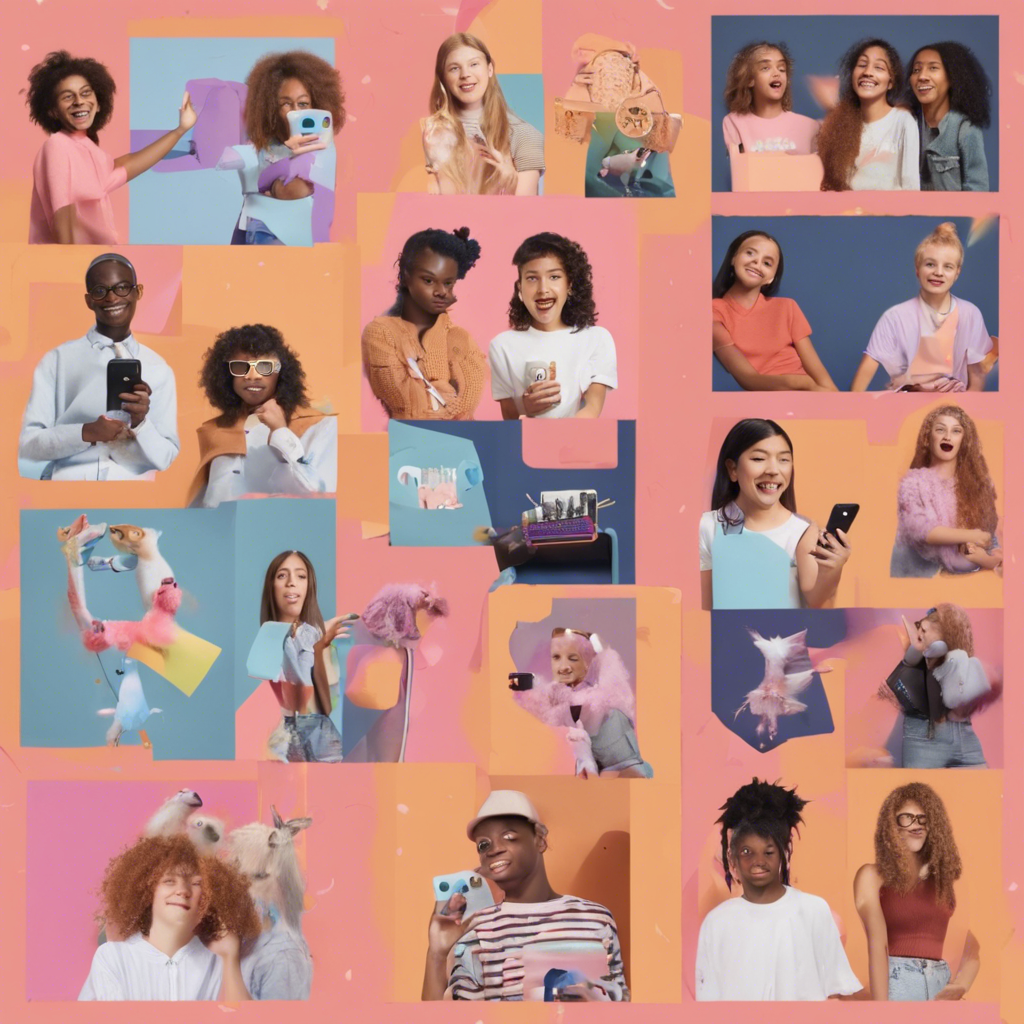What do Gen Z use instead of GIFs?
What Do Gen Z Use Instead of GIFs?
Introduction
GIFs have become a ubiquitous part of digital communication, especially among Gen Z. They add humor, emotion, and context to conversations, making them an essential tool for expression. However, as with any trend, there's always a new wave of alternatives that capture the attention of the younger generation. So, what are Gen Z using instead of GIFs? This article dives into the evolving digital communication landscape, exploring the alternatives that are gaining popularity among the digital natives.
The Rise of Short-Form Video
One of the most significant shifts in digital content consumption has been the rise of short-form video platforms like TikTok. TikTok has not only become a source of entertainment but also a new way for Gen Z to communicate. Instead of sending GIFs, many are now sharing or referencing TikTok videos that encapsulate the same range of emotions and humor. These videos offer more context, storyline, and creativity, making them a compelling alternative to static GIFs.
Why Short-Form Video?
- Creativity and Originality: Short-form videos allow for more creative expression, including music, dance, and skits, which can convey complex emotions and narratives in a single shareable unit.
- Cultural Relevance: TikTok challenges, memes, and trends are a significant part of Gen Z's cultural lexicon. Sharing or referencing these videos is a way to connect over shared experiences and inside jokes.
- Personalization: Videos can be personalized to the individual's style, interests, and even the specific context of the conversation, making each share unique.
The Popularity of Stickers and Emoji
While not a new format, the use of stickers and emoji by Gen Z has evolved. Custom stickers, especially those available on messaging apps like Snapchat and WhatsApp, are increasingly used to add personality and context to messages. Emoji, too, have become more sophisticated with the introduction of skin tones and gender options, making them a versatile tool for expression.
The Role of Stickers and Emoji
- Efficiency and Clarity: For quick exchanges, stickers and emoji can convey both the tone and content of a message more efficiently than text alone.
- Aesthetic Appeal: The visually appealing nature of stickers and the endless variety of emoji mean there's always a perfect match for any message or mood.
- Cultural and Social Significance: Certain stickers and emoji become popular within communities, acting as shorthand for specific inside jokes or cultural references.
The Emergence of Meme Culture
Memes have always been a part of internet culture, but their role in Gen Z's communication cannot be understated. From simple image macros to complex multi-part narratives, memes are a way to share commentary, humor, and even political or social messages. They are often shared instead of GIFs or used to accompany text messages, adding a layer of shared understanding and humor.
The Impact of Memes
- Shared Understanding: Memes create a shared language that can be quickly understood and appreciated by those in the know, fostering a sense of community and belonging.
- Cultural Commentary: Memes are not just for laughs; they often reflect and critique current events, trends, and societal norms, making them a powerful form of expression.
- Versatility: Memes can be adapted, altered, and remixed, allowing for endless variations on a theme and keeping the format fresh and relevant.
The Influence of AR and Interactive Media
Augmented Reality (AR) and interactive media are beginning to change the way Gen Z communicates, offering immersive and engaging ways to share content. AR filters and lenses, especially those that allow for self-expression or humor, are increasingly used in messaging apps and social media platforms. Interactive quizzes, polls, and games are also popular, providing a dynamic alternative to static GIFs for engaging friends and followers.
The Future of AR and Interactive Media
- Engagement and Interaction: AR and interactive media offer a more engaging and interactive form of communication, appealing to Gen Z's desire for immersive experiences.
- Personalization and Creativity: These formats allow users to express themselves in unique ways, from trying on virtual makeup to exploring different identities, which resonates with Gen Z's emphasis on individuality.
- Potential for Innovation: As technology advances, the possibilities for AR and interactive media are endless, promising to revolutionize digital communication in ways we can't yet imagine.
Conclusion
The digital landscape is constantly evolving, and Gen Z is at the forefront of these changes. While GIFs have been a staple of digital communication, the alternatives explored here—short-form video, stickers and emoji, memes, and AR/interactive media—are shaping the future of how we express ourselves online. Each of these formats offers something unique, from the creativity of short-form video to the cultural commentary of memes. As Gen Z continues to lead the way in digital innovation, we can expect to see even more exciting developments in how we communicate online.
In a world where digital natives are always looking for new ways to express their identity, emotions, and humor, the alternatives to GIFs are not just replacements but reflections of a generation's values, creativity, and social consciousness. Whether it's through a TikTok video, a custom sticker, a meme, or an AR filter, Gen Z is redefining digital communication, one share at a time.
Discover more from EMD
Subscribe to get the latest posts to your email.
